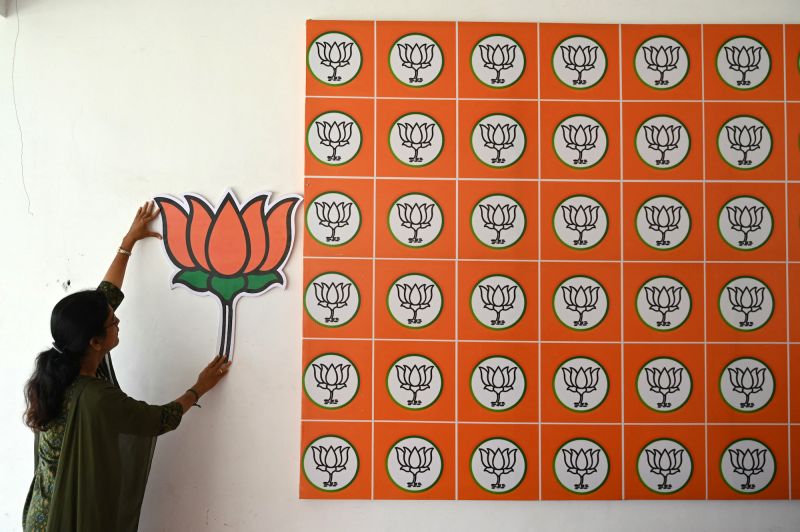Polls in the world’s largest democracy India will open on April 19, the country’s election commissioner announced on Saturday, setting the stage for a nationwide election expected to see Prime Minister Narendra Modi clinch a rare third consecutive term.
An estimated 960 million people in a country of 1.4 billion are eligible to vote in the widely anticipated polls that will take a month to complete.
Modi’s Bharatiya Janata Party (BJP) is expected to secure another five years in power, ruling an India that has become increasingly polarized along religious lines.
Polling will unfold over seven phases around the country ending on June 1.
Indians will be voting for 543 seats in the 545-seat lower house of parliament, called the Lok Sabha, and the other two seats in the house are nominated by the president.
All the votes – from the country’s 28 states and eight union territories – will be counted on June 4, the commission said at a press conference in New Delhi.
Under Modi’s leadership, India is poised to become a 21st-century powerhouse as its economy rapidly expands.
But the populist leader, analysts say, has tightened his grip on its democratic institutions in a way not seen since the 1970s under the iron-fisted rule of Indira Gandhi, with minorities feeling persecuted under the BJP’s Hindu-nationalist policies and dissent muzzled.
Going against Modi is the main opposition Indian National Congress, which has governed the country for much of the 77 years since independence and last year formed an alliance with other parties. The Indian National Developmental Inclusive Alliance, or INDIA, marked a significant step for an opposition struggling to regain national significance.
But cracks in the alliance have already emerged, and it has yet to put forward its candidate for prime minister, lacking anyone with the kind of star quality and appeal projected by Modi.
The prime minister’s calendar last year included diplomatic trips to Australia and the United States, where he presented himself as a statesman cementing the country as a modern global power.
In August, India made history by soft-landing a rover on the moon, becoming just the fourth nation to do so. Weeks later, it launched its first spacecraft dedicated to studying the sun.
India hosted the Group of 20 (G20) in September, presenting New Delhi with an opportunity to extend its leadership beyond the country’s borders at a time of increasing political turmoil.
This January, Modi marked the unofficial start of his election campaign when he inaugurated the controversial Ram Janmabhoomi Mandir, a Hindu temple in the holy city of Ayodhya that was built on the site of the destroyed Babri mosque.
The consecration of that temple, analysts said, marked the seismic shift from India’s secular founding values as Modi disregards the norms dividing religion from state in his push to win a third term. But it was received well in many quarters, with Modi’s followers praising the leader for his dedication to the majority Hindu faith.
In 2019, Modi’s BJP won 303 seats in parliament, taking it over the threshold of 272 required for an absolute majority, dealing a humiliating blow to the Congress party.
Last year, India surpassed China as the world’s most populous country. Its working-age population now stands at more than 900 million, according to 2021 data from the Organization for Economic Cooperation and Development. This number is expected to hit more than 1 billion over the next decade, according to the Indian government.
The election commission said 968.8 million people have registered to vote in the 2024 polls – a 6% increase from 2019.

